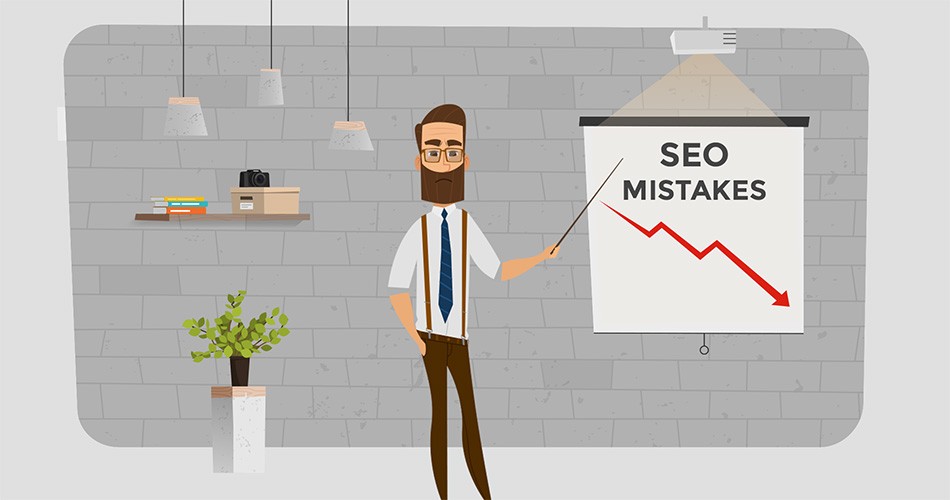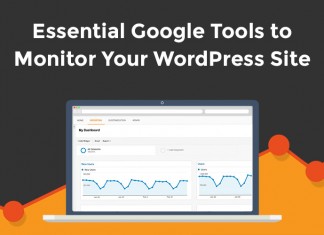Search engine rankings can make or break a website. There are plenty of techniques you can use to improve yours, but also a lot of pitfalls that can sink your site if overlooked.Thankfully, a lot of these errors can be easily avoided simply by understanding how SEO works at a basic level. Although there’s no magic formula to shoot to the top of the rankings (and you should distrust anyone who tells you otherwise!), there are several steps you can take to avoid dropping to the bottom.
With the above in mind, in this aritcle we’re going to cover some of the most common SEO mistakes that can be made in WordPress, and teach you how to avoid them.
1. Poor Categorization and Tagging
Categories and tags (known collectively as taxonomies) are important both to the overall user experience (i.e. making it easier for users to find content) and to your search engine rankings.
The key to using these two elements effectively is to be selective in their application. While the content you publish may cover several different topics, it’s best to keep your overall categories somewhat generic. That way, they will regularly be updated with fresh content, which is far better than a huge number of disparate categories that are rarely refreshed with new content.
The good news, for those of you who are more organization-oriented, is that when it comes to tags, you can be a little more specific. Tags should be used to specify the key topics within a post. In fact, you can think of them as keywords that might show up on search engine result pages (so keep them concise!).
2. Not Using Header Tags Properly
Header tags are meant to be used to structure your content in a hierarchical manner and instruct search engines as to what the main topics of any given post are.
For example, a regular blog post should include its title as an h1 header, which in this case would be “5 WordPress Mistakes That Can Sabotage Your SEO”. Your theme should do this for you; if it doesn’t, you might have reason to reconsider your choice.
Header tags should subsequently be used in a progressive hierarchy (h3s within h2s, and so on) in order to both make your content easier to understand and let search engines know what is covered within.
3. Failing to Provide a Sitemap
Sitemaps are a big deal. They help search engines learn about and index all of the relevant pages on your site, and can also be used to provide additional information, such as metadata. They’re so important that Google explicitly mentions them as a way to help it find your pages within their Webmaster Guidelines.
The key here is to instruct search engines to only index pages with relevant content (or any content at all). Simply listing every page within your website could result in search engines adding duplicate versions of the same content if they have unique IDs, which is why we (and pretty much everyone else) recommend using canonical links on your sitemaps.
On the upside, building a sitemap is no hard task at all. In fact, you can use a plugin such as Google XML Sitemaps to do all the work for you.
4. Overusing Keywords
Out of all the mistakes we’ve covered so far, keywords present the easiest trap to fall into. After all, these magic words have the power to lead visitors to your website if they happen to search for the ones you’ve optimized your content for.
The problem here is that even if you’ve found the perfect keywords, search engines will penalize page results if they consider that you’ve been playing fast and loose with their use within your content. Are you trying to rank for “Bunny-shaped chocolates”? Well, then you better not deliberately stuff your posts with the phrase when there’s no reason for it to be there (although we can’t imagine a single context in which they wouldn’t be welcome).
A lot of SEO ‘experts’ will tell you about optimal keyword densities, but the simple truth is that both search engines and visitors can spot these things quite easily, and trust us, they don’t like it a single bit. In an age of semantic search, you’re better off writing naturally and letting search engines ‘understand’ your content.
5. Ignoring Page Optimization
Poorly optimized websites take longer to load and prolonged loading times are a big no-no according to the folks at Google (who probably know a thing or two about how to go about improving your search engine ranking).
Furthermore, long loading times can also lead to high-bounce rates among visitors, which is another factor that’s taken into consideration by search engine algorithms.
Some of the most common culprits for this issue include poor image optimization, too many simultaneous scripts, and having too many active plugins. Thankfully, all of these issues can be taken care of by following a few simple guidelines.
Conclusion
Search engine optimization is a very complex field and there’s seemingly no end to the number of things you can do to improve yours. However, you don’t need a Ph.D. in the field to obtain decent rankings – all you need is to keep the fundamentals of good SEO in mind and try to stay on top of the latest standards and practices.
That being said, perhaps it wouldn’t hurt to sit down and take a look a look at your websites and ask yourself, “Am I making any of these mistakes?”. If so, there’s no better time than now to fix them and begin your ascent in the rankings.
What’s your experience been with search engine optimization techniques? Share your tales of success (or woe) with us in the comments section!
















